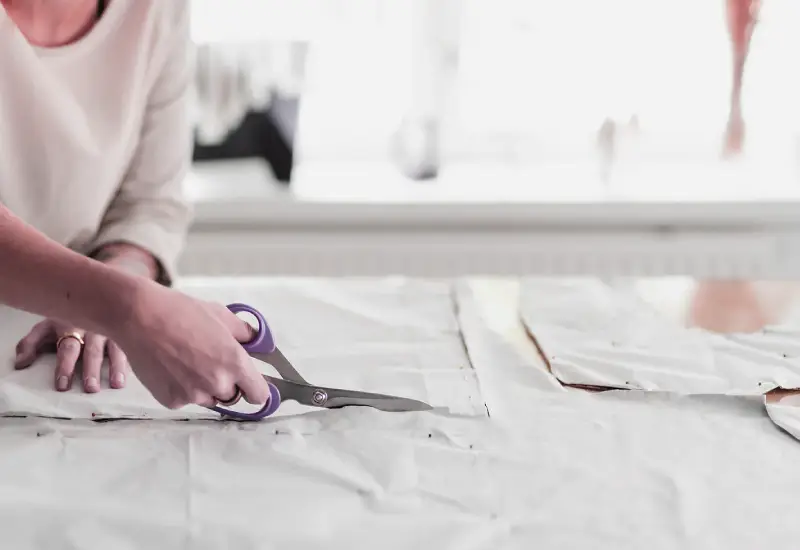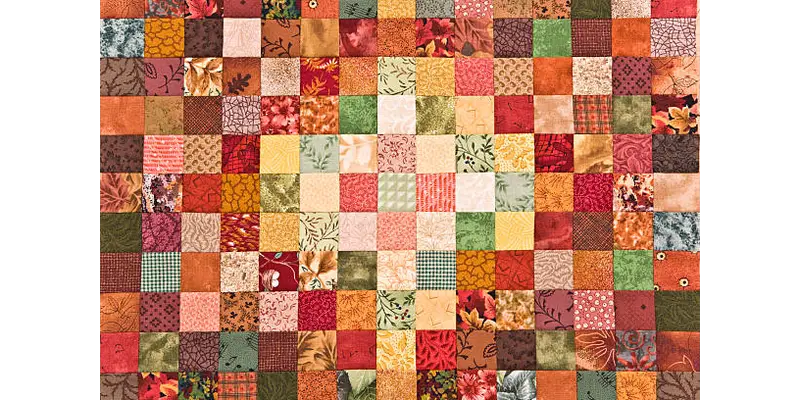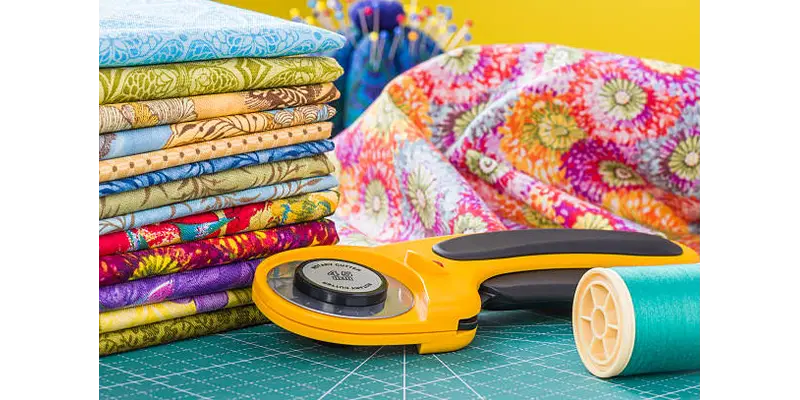What is Width of Fabric in Quilting?

When sewing quilts, it’s crucial to know standard fabric widths. Common standard fabric widths are often referred to as standard quilting fabric widths, also known as “standard quilting fabric width” or “standard width of quilting fabric”.
This standard width is usually between 42 inches and 44 inches (approximately 106 to 112 centimeters). Fabrics of this width are widely used in the quilt making industry and are prized for their practicality and suitability in a variety of quilt projects.
Standard fabric widths are important not only for their universal suitability for quilt making, but are also prized for their ease of use in crafting and making.
This width is wide enough to accommodate most quilt designs and provides ease when seaming and piecing. Since fabrics in this standard width are more common, they are also more readily available on the market, which is an added convenience for quilt makers.
When choosing a standard fabric width, fabricators can consider its suitability, availability, and fit to the project. Although standard fabric widths are widely used in quilt making, individual adjustments may be necessary for a specific project. Therefore, becoming familiar with the features and benefits of standard fabric widths can help makers better plan and realize their quilt making projects.
Effect of Fabric Width on Design


The effect of fabric width on quilt design is significant and can influence various aspects of the final product.
Seam Placement
The width of the fabric determines how many seams are needed to cover the quilt top. Wider fabric allows for fewer seams, especially in larger quilts. Fewer seams can create a cleaner aesthetic and reduce the chance of seam distortions in the quilt top.
Quilt Size
Fabric width directly affects the maximum size of the quilt that can be created without piecing. Wider fabric accommodates larger quilt sizes, making it ideal for bed-sized quilts or large wall hangings. This can influence the overall layout and scale of the quilt design.
Pattern Placement
The width of the fabric impacts how quilt blocks or patterns are laid out. With wider fabric, designers have more flexibility in arranging blocks without worrying about seam interruptions. This can lead to more cohesive and visually pleasing designs.
Border Options And Border
With wider fabric, designers have more flexibility in arranging blocks without worrying about seam interruptions. Wider fabric reduces the need for piecing backing fabric together, simplifying the quilt-making process and resulting in a smoother finish on the quilt back.
Efficiency in Fabric Usage
Using wider fabric can be more efficient in terms of fabric usage, as it minimizes waste and reduces the number of cuts needed to cover the quilt top or backing.
How to Measure the Width of Fabric
Accurately measuring fabric width is essential to ensure you purchase the correct amount for your quilting projects.
Tools and Techniques for Accurate Measurement
To measure fabric width, you’ll need a measuring tape or a ruler that’s long enough to span the fabric. Lay the fabric flat, ensuring it’s smooth and free of wrinkles, and measure from one selvage edge to the other.
Common Errors When Measuring Fabric Width
One of the most common mistakes quilters make is not accounting for the selvage, which can range from a quarter of an inch to more, depending on the fabric. It’s also important to ensure that the fabric isn’t stretched or skewed while measuring, as this can give an inaccurate result.
Fabric Width and Sewing Techniques

Fabric width plays an important role in sewing techniques, affecting the sewing methods and steps. Here’s how fabric width affects sewing techniques:
Seam length and direction
Using wider fabric reduces the number of seams, thus requiring longer seam lines. When sewing, you need to pay attention to controlling the straightness and flatness of the seams to ensure the quality of sewing.
Splicing method
Wider fabrics are suitable for strip piecing, where long strips of fabric are spliced together and then cut to the required size. This splicing method is more efficient than splicing squares or rectangles one by one and reduces waste.
Sewing Technique Adjustment
When sewing longer seams, more attention needs to be paid to controlling the flatness of the fabric and matching the seams to avoid twisting or waves.
Backing Fabric Handling
When working with wider backing fabrics, you need to consider how to handle and manipulate the larger pieces of fabric. This may involve rolling or folding the fabric for sewing on a sewing machine or long arm sewing machine, ensuring you get a flat and even seam across the entire backing.
Sewers should adjust their sewing techniques according to the width of the fabric to ensure the desired effect and quality during the sewing process.
Trends in Fabric Width


The changing trend of fabric width is affected by market demand, technological progress and environmental awareness.
As the demand for larger quilts increases, wider fabric options may become available. Fabric suppliers may increase production of wide fabrics to meet demand for backing large quilts. Technological innovations may facilitate the production of wider cloths without increasing costs or production time.
At the same time, the fabric industry may also be increasingly concerned about sustainability and environmental protection, which may lead to the production of wider fabrics to reduce waste and energy consumption.
How to Purchase Fabric Based on Width
Buying fabric with the right width can save time and money.
Determining Yardage for Quilts
Knowing the width of your fabric will help you calculate how much yardage you need. Most patterns will specify fabric requirements based on standard widths, so you may need to adjust if you’re using a non-standard fabric.
Bulk Buying vs. Small Yardage Purchases
When purchasing fabric, buying in bulk can be cost-effective, especially for large quilts. However, smaller projects may not require as much fabric, making it wiser to buy smaller cuts to avoid waste.
Pre-Cuts and Fabric Width: Jelly Rolls, Charm Packs, and More
Pre-cuts are a popular choice for quilters, especially for beginners or those looking to save time on cutting.
Standard Pre-Cut Sizes and Their Corresponding Widths
Pre-cut fabric packs, like jelly rolls, charm packs, and layer cakes, come in specific sizes. For example, jelly rolls are typically 2.5 inches wide by the full width of the fabric (42-45 inches).
Using Pre-Cuts in Quilting Projects
Pre-cuts are perfect for certain quilt patterns, and they allow for quick assembly. However, knowing their corresponding widths is important to ensure they fit within your quilt’s design.
Conclusion

“What is the width of fabric in quilting?” refers to the standard size of fabric used to make quilts, usually ranging from 42 to 44 inches. This width affects the design, seam placement, and overall efficiency of your quilting project.
If you want to know more information, click on our website to see more information.
